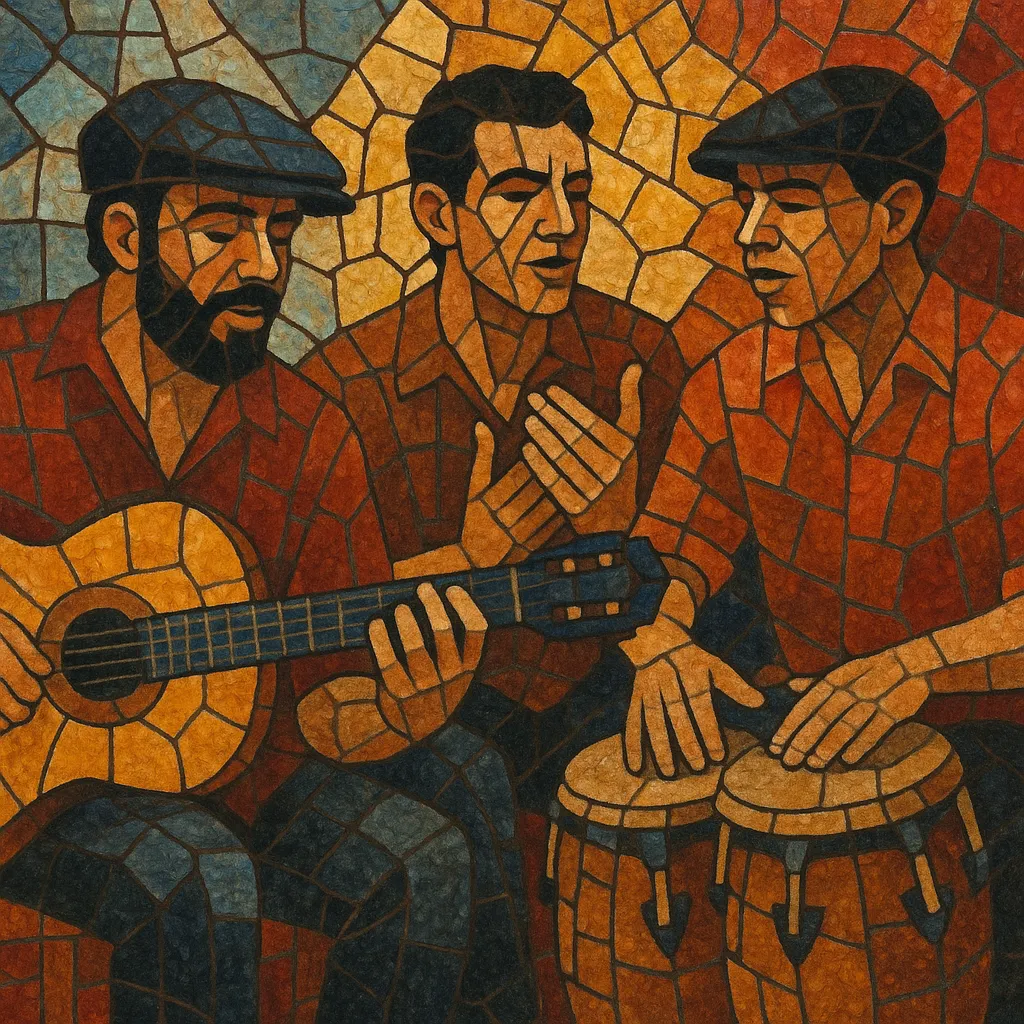Rumba catalana is a popular urban genre that emerged in Barcelona’s Romani (Gitano) communities, blending flamenco compás with Afro‑Cuban dance rhythms and the hooks of pop and early rock & roll.
Its signature sound is the percussive “ventilador” right‑hand technique on the Spanish guitar, where strums, muted slaps, and thumb hits create a built‑in rhythm section. Handclaps (palmas), shakers, bongos or congas, and light bass support upbeat, catchy choruses. Lyrics are typically streetwise and humorous, often mixing Catalan, Spanish, and Caló (Romani lexicon), and songs are designed for dancing and collective sing‑alongs.
Rumba catalana took shape in the 1950s within Barcelona neighborhoods such as El Raval and Gràcia. Romani musicians adapted flamenco’s rumba (rumba flamenca) to Afro‑Cuban rhythms that had been popular in Spain since the pre‑war era, adding the immediacy of pop and early rock & roll. The key innovation was the “ventilador” technique, turning a single guitar into a rhythm, harmony, and percussion engine.
The style broke into Spanish mainstream culture in the 1960s and 1970s through hitmakers such as Peret, El Pescailla, Los Amaya, and Rumba Tres. Their recordings codified the fast, four‑on‑the‑floor feel with syncopated strumming, call‑and‑response choruses, and witty, street‑level storytelling. Despite censorship in the late Franco period, rumba catalana thrived on radio and in dance halls because of its festive character.
From the late 1970s, Gato Pérez re‑framed the genre poetically, tying it to Barcelona’s urban identity. In the early 1990s, Los Manolos’ appearance at the 1992 Barcelona Olympics sparked a mass revival. A new wave of bands—Sabor de Gràcia, Muchacho y Los Sobrinos, and later fusion acts like Ojos de Brujo and Dusminguet—blended rumba catalana with ska, hip‑hop, and electronic textures, carrying it into world‑music circuits.
Contemporary projects and legacy ensembles keep the repertoire alive at festivals and neighborhood fiestas. The genre remains a symbol of Barcelona’s multicultural spirit, influencing Spanish pop and many "mestizaje" (hybrid) scenes while retaining its dance‑floor core.


